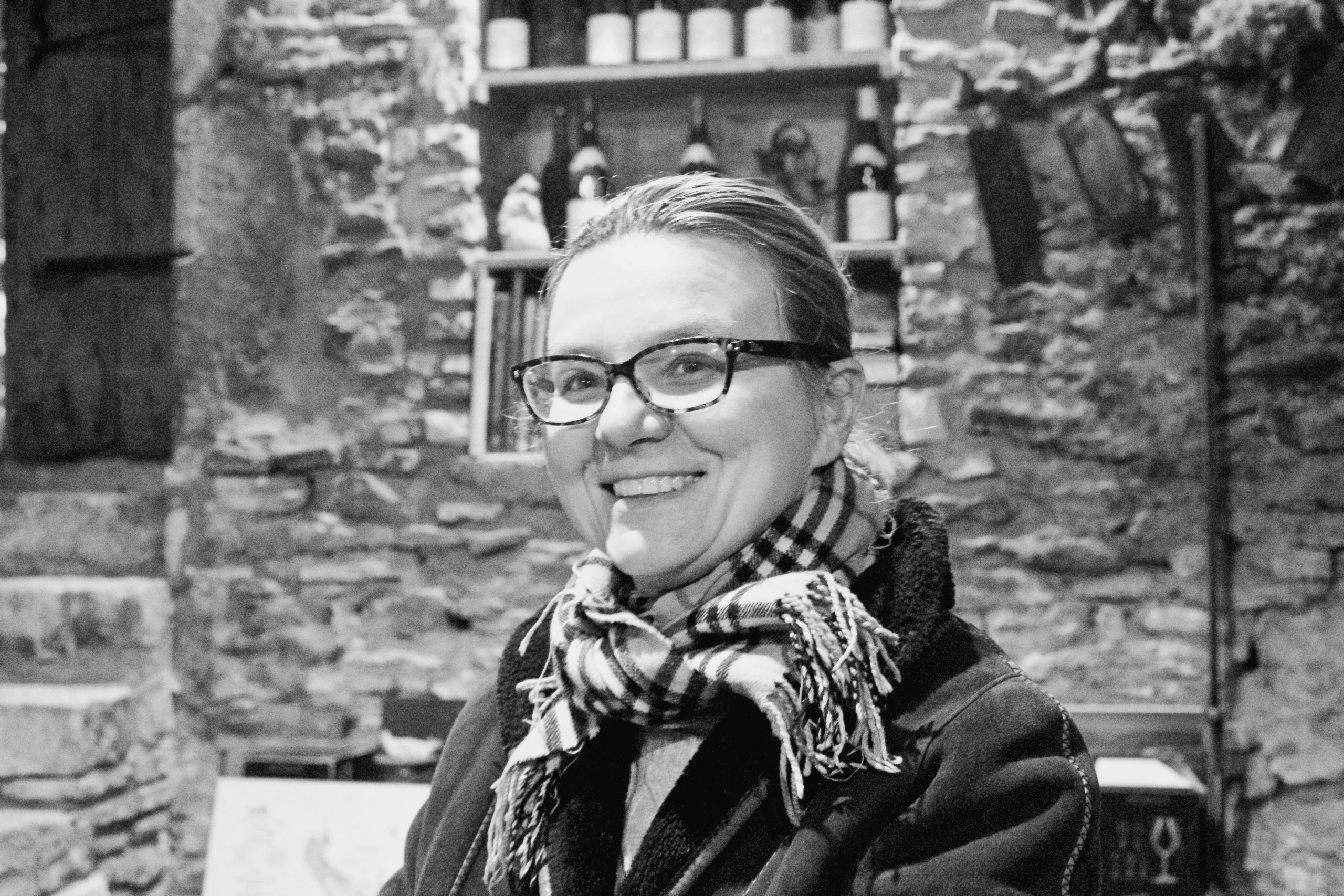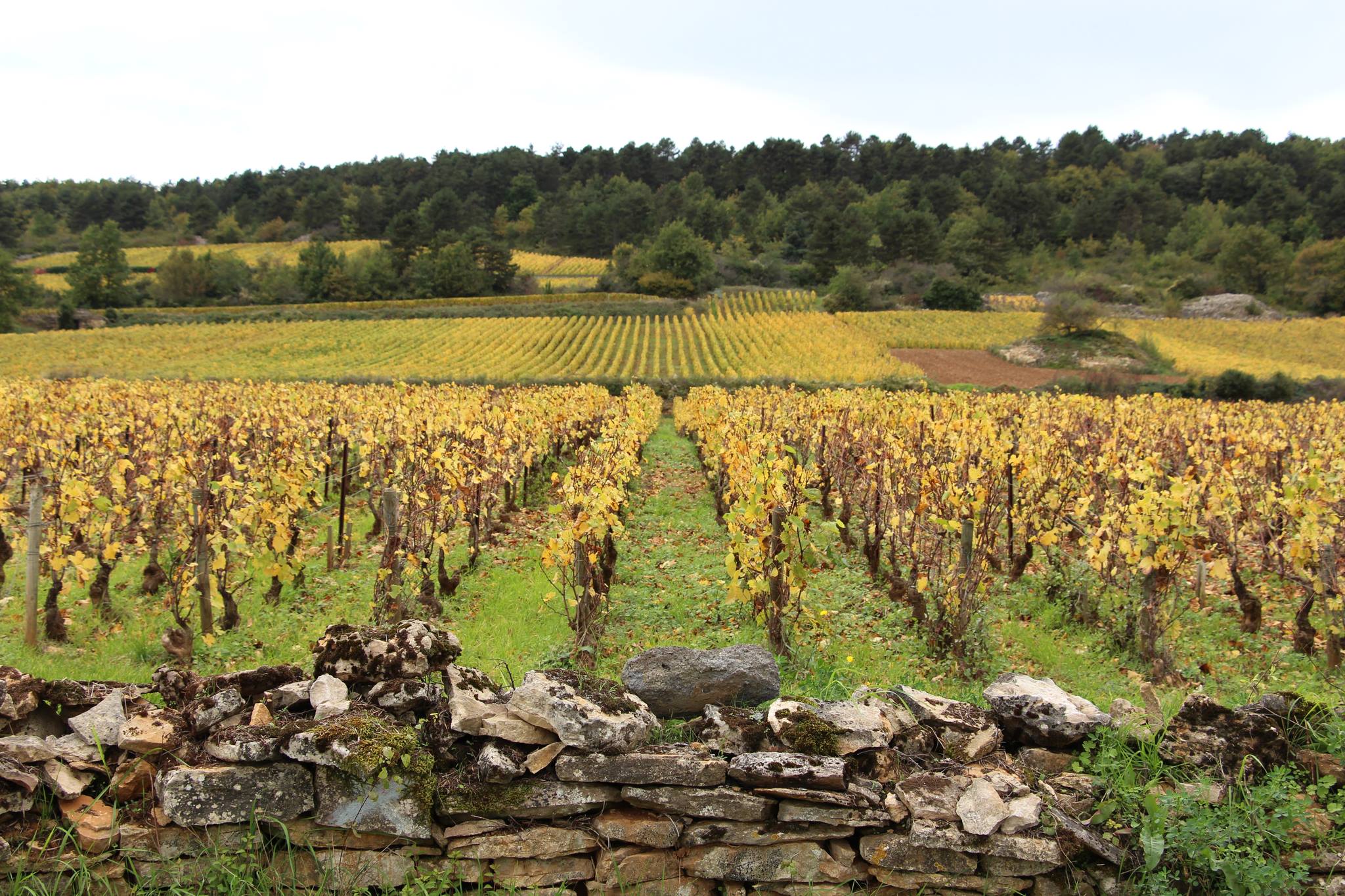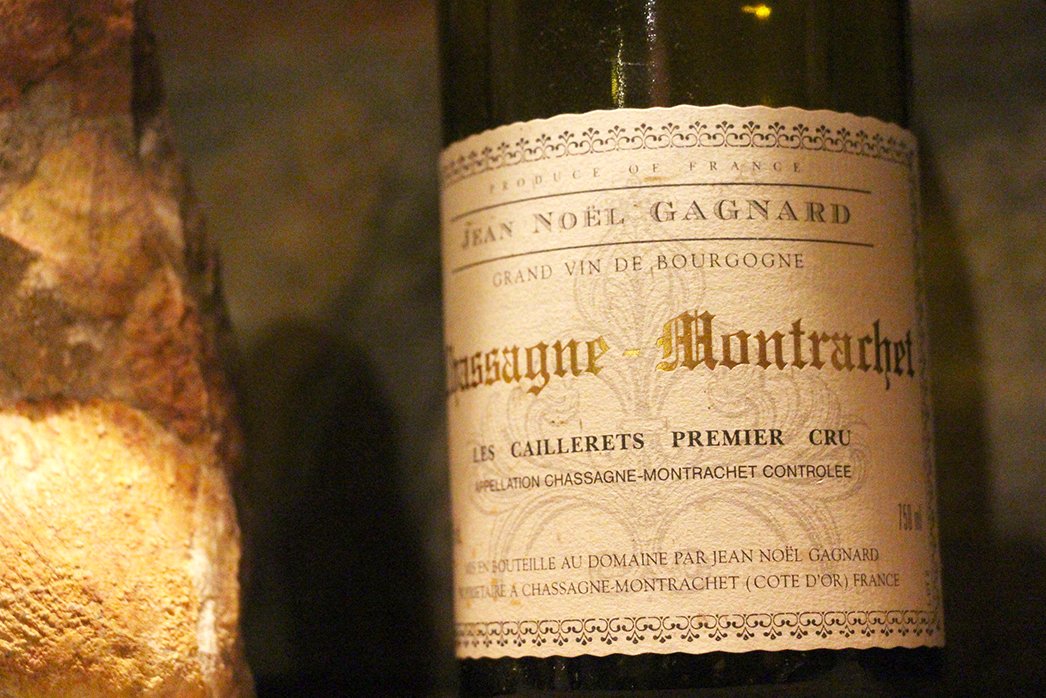Jean-Noël Gagnard’s 2017s
finally made it.
Within our group of restaurant sommeliers, Jean-Noël Gagnard has some seriously devout fans that have snapped up our minuscule supply for their restaurant programs since we began to import her wines a decade ago, starting with the 2008 vintage. Perhaps it’s because the range is a match made for classical French countryside cooking that doesn’t stray too far off the path and into trendy winemaking. While Gagnard’s Chassagne-Montrachets drink beautifully without an accompaniment of food, it’s a pity not to pair them up with something like slow roasted chicken, or even a richer French classic fish preparation, like à la meunière—a dish I think could be a top choice with the aromatic and taste profile of these Chardonnay wines.Is 2017 one of the white Burgundy vintages of a generation?
For a quick anecdote about the 2017 Côte d’Or whites, I will borrow the words of Pierre Morey (by way of a conversation with his daughter, Anne), a quiet legendary winegrower who made his reputation as the régisseur (the wine director) for Domaine Leflaive during twenty years’ time. He played a largely influential role in Leflaive’s conversion to biodynamic farming, along with his own biodynamically-run domaine, Pierre Morey. As I recall, Anne stated her father said it was among the most beautiful Chardonnay fruit he has ever seen. What else is there to say?
A Brief Story & Details On The Wines
The style at this Chardonnay focused domaine is one of subtlety led with gentle sweet golden earth tones. Often found in Caroline’s range of whites are beautiful wild mushrooms scents of chanterelles and porcinis, brown butter, dried herbs and always some kind of citrus tones, often like a Meyer lemon or the unique purity of an Amalfi Coast lemon grown on steep limestone terraces overlooking the Mediterranean. It’s hard to know exactly why her style is unique in this way—I can’t find another that I could say is a mirror image—and even to ask her why her wines are the way they are brings her to a full smile, often bursts of laughter, followed by little explanation except that it’s just the way she does it.
In the cellar, the wines are made in a straightforward style, and thankfully gimmick-free within a white Burgundy world of too much of one thing, or not enough of another. There are no games with reduction, so the perception of mineral nuances is textured and aromatically present and finely tuned. Flashy wood techniques and other fooling about simply aren’t her style either, just a confidently crafted set of wines that demonstrates—and concedes to—the differences between their terroirs with striking clarity. When one does organic farming like she does (along with certification for it), as well as following many biodynamic principals and treatments, a soft touch in the cellar seems the logical approach.
We begin with Gagnard’s Hautes-Côtes de Beaune “Sous Éguisons.” This small Chardonnay parcel was planted in the early to mid-2000s high above Saint-Aubin, west of Chassagne-Montrachet. It’s delicious and serious Chardonnay deeply marked by its terroir: 430-450 meters of altitude (30% higher than most that lie on the Côte), colder weather than vineyards on the Côte d’Or main slope, spare clay and limestone rock topsoil and limestone bedrock. This is the highest energy and frequency in her range of still white wines and over delivers on expectations, even from this special winegrower.
Gagnard’s Chassagne-Montrachet “Les Chaumes” is always a tough one for us because of the quality of the wine and its price—at least for those who have a budget for Burgundy—and the minuscule quantity we get each year. Burgundy can be confusing and when one tries to dig into the lieux-dits of premier cru wines it can get a little hairy, but few more than the south side of Chassagne-Montrachet. In this specific area of the commune, known for its darker red clay soil, the premier crus, Boudriottes and Morgeot, are singular parcels in their own right, but they can swallow many of the less famous premier crus surrounding them and put their names on the label despite being different vineyards. To make it more confusing, there is a parcel of premier cru also named Les Chaumes, but Gagnard’s village parcel Les Chaumes abuts the premier cru, Boudriotte, just to the south. This wine always exceeds the expectation and given its proximity to one of the village’s most well-known vineyards, it’s no surprise.
Gagnard’s parcel of Chassagne-Montrachet 1er Cru Les Chaumées (not to be confused with the previous village wine, Les Chaumes) begins at 300 meters altitude and faces northeast on a relatively steep slope composed of shallow rocky white clay soil and limestone bedrock. It sits within the mouth of the east to west valley that opens up into Saint-Aubin and is exposed to cooler winds than those more protected in the middle of the Côte and far away from the valley. The characteristic trait of this type of terroir is expressed by Caroline through strikingly fine cords and a harmoniously high, but gently flowing analog frequency. Given this terroir’s natural tendency for tension, freshness and excesses of stone and mineral-like impressions, it’s all tucked into its read-between-the-lines style. This is not a tour de force Chassagne, but a tour de finesse. Les Chaumées’ discreet nature will resonate with those who enjoy quietly beautiful, confident and thoroughly complex wines.
The Chassagne-Montrachet 1er Cru Blanchot-Dessus is one of Gagnard’s best wines. It’s grandiose in a grand cru way with its heavyweight body and richness for a good premier cru price. The premier cru, Blanchot-Dessus, (not the village lieu-dit close by), is the story of seemingly an unlucky fault break in the limestone bedrock that may have led to this vineyard ultimately being stripped of the name, Blanchot-Batard-Montrachet, which if it weren’t it would have catapulted it into eternal glory as the sixth Montrachet grand cru. Now it’s one of the few remaining secrets for Burgundy insiders. There’s a lot more story behind this vineyard (which you can read about here), but suffice it to say that with only three cases imported each year into California, and with this banner year, it’s a no-brainer for those with a bit of money set aside for special and rare bottles.
The Chassagne-Montrachet 1er Cru Les Caillerets is Gagnard’s top premier cru; some consider it to be the grandest cru on the south hill of the commune. Gagnard’s parcels are prime, and located in En Caillerets on the spine of the hill and Les Combards, higher up on the slope. The other two vineyards within the commune that can be labeled as Les Caillerets are Vigne Derrière and Chassagne—yes, a vineyard in Chassagne-Montrachet is simply named Chassagne. What’s interesting about Gagnard’s parcels is that they are either quite steep (Les Combards) or on what appears to be more of a strongly convex section (En Caillerets), making for—in theory—even less topsoil than others that have a more concave slope, like much of Vigne Derrière, the vineyard just north of En Caillerets with the village on the other side. What a convex hill slope means is likely more cut, freshness and stoniness to go along with Les Caillerets’ fabulous body.
The only critique I would dare to send the direction of Les Caillerets (and this is a stretched criticism) is that sometimes it’s too good at everything—like the MVP-type quarterback in American football that can throw perfectly and run with the speed and agility of a spooked deer. Caillerets’ imperfections are few. However, its shortcomings may be found by those who adore the imperfections in a wine that make it stand out, so long as the losses are made up with authenticity and honesty—for me, this is often the case with wine, and friends too. Everything is in line with Les Caillerets and it’s a tough one to beat, and criticize. Once the cork is pulled, take your time; this wine needs it. It will show you its magnificence one slow layer at a time and will surely earn your respect, as it confidently carries the reputation of Chassagne-Montrachet on its very capable shoulders.
One extremely memorable bottle of Gagnard’s Santenay Rouge 1er Cru Clos de Tavannes was opened for me on a recent visit to Caroline’s cellar. It was decades old (I’m embarrassed to say that I can’t tell you what vintage it was!), and it floored me. It made a permanent believer out of me concerning the quality of Pinot Noir that is often overlooked in Santenay and Chassagne-Montrachet. Clos de Tavannes sits just across the border toward the southeast from Chassagne-Montrachet on perfect red wine soil: iron and calcium rich red clay and limestone. My suggestion is to forget about this wine once in your possession and occasionally check out its pretty label—one of my favorites in Burgundy. Caroline L’Estimé, the winegrower for decades now, and daughter of Jean-Noël Gagnard, destems the grapes completely but isn’t afraid to extract old school tannins to create a wine designed for the long haul. This renders a young wine with a stern palate but strikingly bright red fruit aromas that can be misleading for its early approachability. We were allocated only 48 bottles of this wine and a few will make it to my cellar, as they do each year. 2017 should offer a wine with much more upfront appeal than past years, but I’d still suggest to wait.





